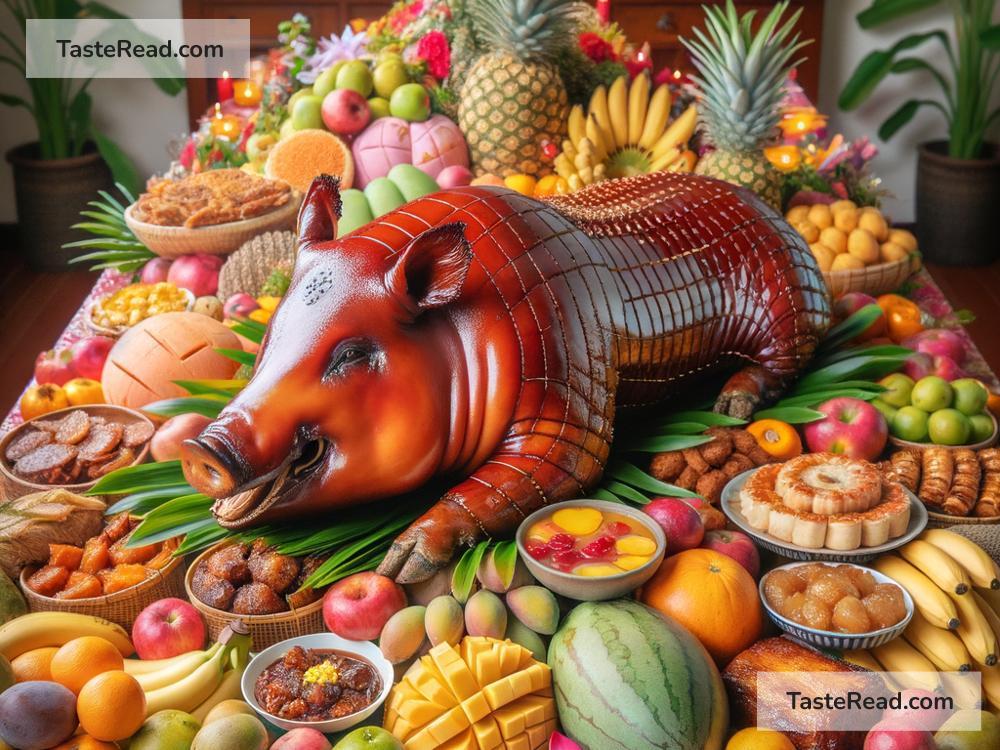Why Filipino Lechon is the Ultimate Party Dish
Picture this: You’re at a grand celebration, surrounded by laughter, vibrant music, and the enticing aroma of delicious food. At the heart of this joyous feast is a dish so revered and beloved that it instantly signals a grand occasion: the Filipino Lechon. Yes, this roasted pig is not just food; it’s a cultural icon, embodying the festive spirit and communal joy of the Philippines. Here’s why Lechon holds the crown as the ultimate party dish.
The Centrepiece of every Celebration
In the Philippines, no big celebration is complete without Lechon. Be it weddings, birthdays, fiestas, or even Christmas and New Year celebrations, Lechon is the show-stopper, the main event. It’s not just another item on the menu; it’s THE dish around which the whole feast revolves. The reason? Its preparation, taste, and the communal joy it brings are unmatched.
A Feast for the Senses
Lechon is a true feast for the senses. Visually, it’s stunning. A whole pig roasted to perfection, with glistening, crispy skin, looks majestic as the centerpiece of any feast. Then there’s the aroma – oh, the aroma! The scent of the seasoned, succulent pig roasting over a fire is something that tantalizes the taste buds before you’ve even taken your first bite.
But the real magic happens when you taste it. The crispy skin gives way to tender, flavorful meat that melts in your mouth. This combination of textures and flavors is what food dreams are made of, making Lechon an irresistible delight.
An Art and a Tradition
Lechon is not just a dish; it’s an art form passed down through generations. The technique of roasting a whole pig to perfection is a labor of love, a skill honed over time. Every region in the Philippines has its own version, with variations in stuffing, marinating, and even the sauces served alongside. Yet, at its core, the tradition remains the same: a celebration of family, community, and togetherness. Cooking Lechon requires patience and teamwork, often involving the whole family or community, making its preparation a social event in itself.
The Heart of Filipino Hospitality
Filipinos are known for their warmth and hospitality, and Lechon exemplifies this. Serving Lechon at a party is a sign of respect and generosity towards guests. It’s a way of saying, “You are family, so we are giving you our very best.” This level of hospitality, embedded deeply within the Filipino culture, is what makes Lechon more than just food; it’s a symbol of love, unity, and the joy of sharing.
A Culinary Adventure
For those new to Filipino cuisine, Lechon offers a unique and unforgettable culinary adventure. Its rich flavor and tender meat make it an instant favorite among both locals and visitors. Furthermore, the experience of watching it being roasted, carved, and served is a spectacle in itself, adding an element of excitement to any gathering.
Moreover, Lechon is often accompanied by a variety of side dishes and sauces, most notably the liver sauce – a sweet, tangy sauce that complements the meat perfectly. This leaves room for exploration and for finding the perfect combination of flavors to suit every palate.
The Joy of Sharing
Maybe the most important aspect of why Lechon is the ultimate party dish is the communal joy it brings. Lechon is meant to be shared. It brings people together, encouraging conversation and laughter around the table. This sense of community, of celebrating life’s blessings together, is what makes Lechon so special.
Conclusion
From its stunning presentation and mouthwatering flavors to the love and tradition with which it is prepared, Lechon is more than just a dish; it’s an event. Its ability to bring people together, to turn any gathering into a celebration, is why it reigns supreme as the ultimate party dish in the Philippines. So, next time you find yourself at a Filipino feast, take a moment to savor not just the delicious flavors of Lechon but the warmth, hospitality, and communal joy that it represents.


